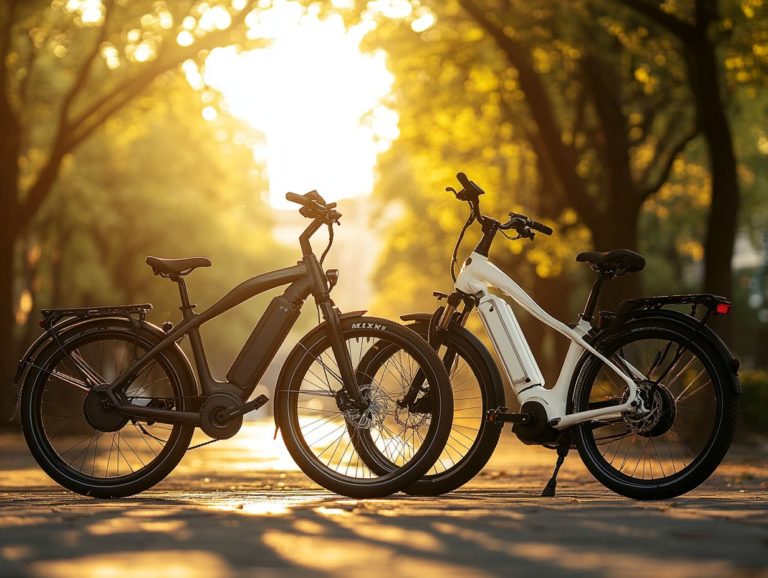What Is the Average Lifespan of an E-Bike?
E-bikes are taking the world by storm, offering an exciting new way to travel! They provide an eco-friendly and efficient mode of transportation that blends the convenience of cycling with the power of electric assistance.
You might wonder how long you can expect your e-bike to last. This article looks at the average lifespan of e-bikes, examining the factors that affect their durability and offering essential maintenance tips to help you maximize that lifespan.
It also compares e-bikes with traditional bicycles, empowering you to make an informed decision for your next purchase. Whether you’re an experienced cyclist or just starting your journey, grasping these key aspects will undoubtedly elevate your e-biking experience.
Contents
- Key Takeaways:
- The Average Lifespan of an E-Bike
- How to Extend the Lifespan of Your E-Bike
- Comparing E-Bike Life Span to Traditional Bikes
- Frequently Asked Questions
- What Is the Average Life Span of an E-Bike?
- How can I prolong the life span of my E-Bike?
- Do E-Bikes have a shorter life span compared to traditional bikes?
- What factors can affect the life span of an E-Bike?
- Is it worth investing in a high-quality E-Bike to extend its life span?
- What should I do if my E-Bike is nearing the end of its life?
Key Takeaways:
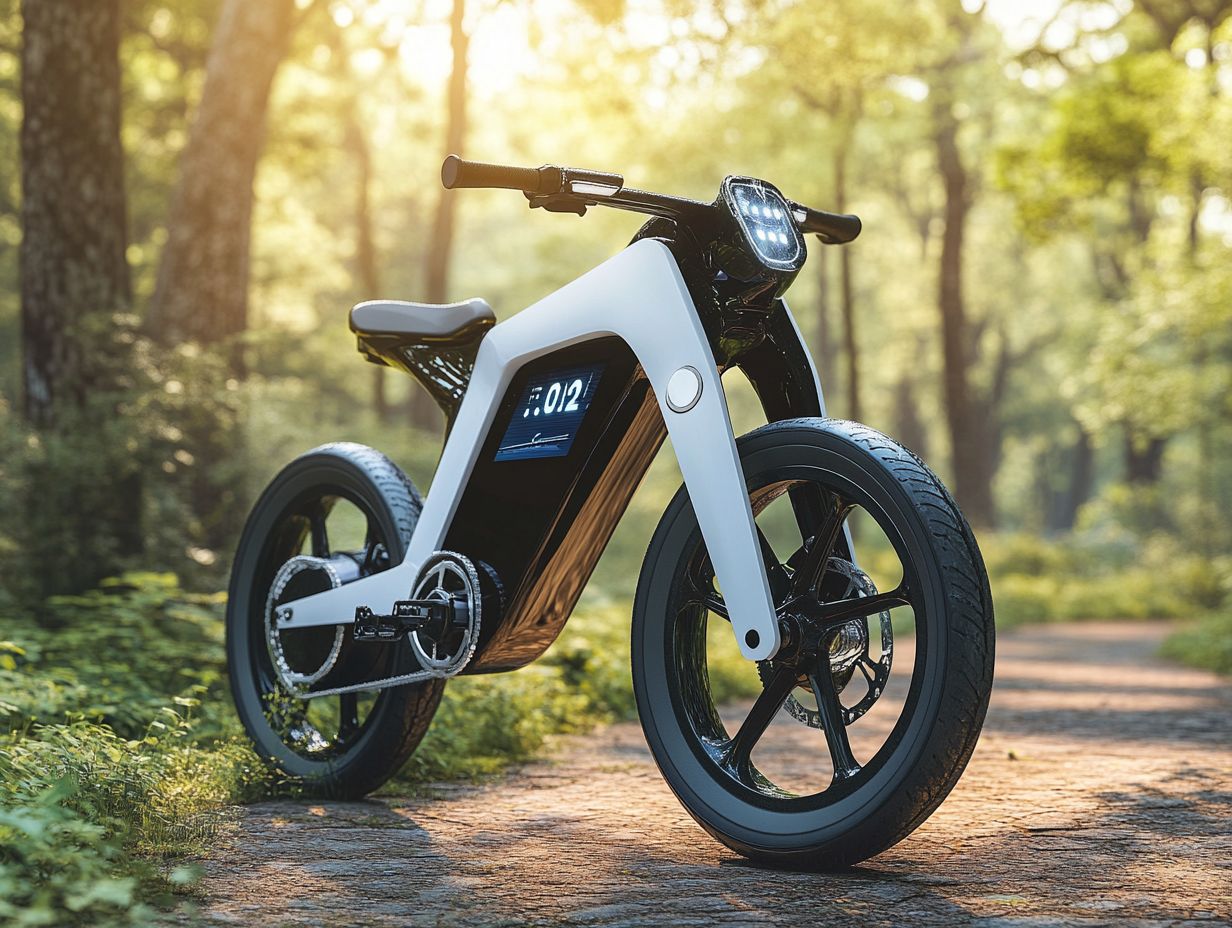
- The average lifespan of an e-bike is affected by factors such as usage, maintenance, and brand quality.
- E-bikes typically last between 3-5 years, but proper maintenance can extend their lifespan to 10 years or more.
- Compared to traditional bikes, e-bikes require more maintenance due to their complex electrical components, but they offer a longer lifespan and easier riding experience.
What are E-Bikes?
E-bikes, or electric bikes, represent a cutting-edge, eco-friendly solution for mobility that seamlessly blends traditional cycling with modern technology. They are equipped with advanced components like rechargeable batteries and powerful motors, providing an efficient alternative for commuting and leisurely rides.
Models such as the Himiway D7 and Ride1Up showcase the impressive variety in e-bike design, featuring innovations that enhance your riding experience while promoting sustainability.
As more people seek alternatives to fuel-driven vehicles, e-bikes have solidified their status as a practical choice that can significantly reduce carbon footprints. By combining electric assistance with your own pedaling power, uphill climbs and longer distances become manageable adventures.
Technological advancements, including integrated GPS and app connectivity, enhance navigation and tracking, creating an interactive experience that s hard to beat. Compared to traditional bicycles, e-bikes offer remarkable versatility, catering to diverse needs from daily commutes to leisurely excursions.
This shift encourages a healthier lifestyle and contributes to reducing road congestion and improving air quality for everyone.
The Average Lifespan of an E-Bike
The average lifespan of an e-bike can vary based on several factors, such as component quality, battery life, and maintenance practices. Typically, e-bikes last anywhere from 3 to 10 years, depending on care and riding conditions.
Regular inspections and proper charging of batteries are essential for keeping your electric bike functional and reliable over time. To understand how often you should replace your e-bike battery, staying attentive to the frame components will also help ensure longevity.
Factors that Affect Lifespan
Several key factors significantly influence the lifespan of your e-bike, including battery life, motor durability, and the quality of the frame components. The riding conditions such as urban streets or rugged trails also play a crucial role in how much wear and tear your bike experiences. Environmental factors like climate and storage practices can further impact the longevity of components and overall performance.
To extend the life of your e-bike, adopting a regular maintenance routine is essential. For instance, keep your battery charged between 20% and 80% to prevent degradation, and understanding your battery’s lifespan can also help. Regularly lubricating the chain and tightening bolts will enhance the durability of your motor.
Be cautious when navigating rough terrains; excessive impacts can compromise the integrity of your frame. Storing your e-bike in a climate-controlled environment minimizes exposure to extreme temperatures, which can be detrimental to both the battery and electronics.
Ultimately, being proactive in your maintenance not only mitigates potential issues but also enhances the longevity and performance of your e-bike. Don’t miss out on maximizing your ride!
How Long Do E-Bikes Typically Last?
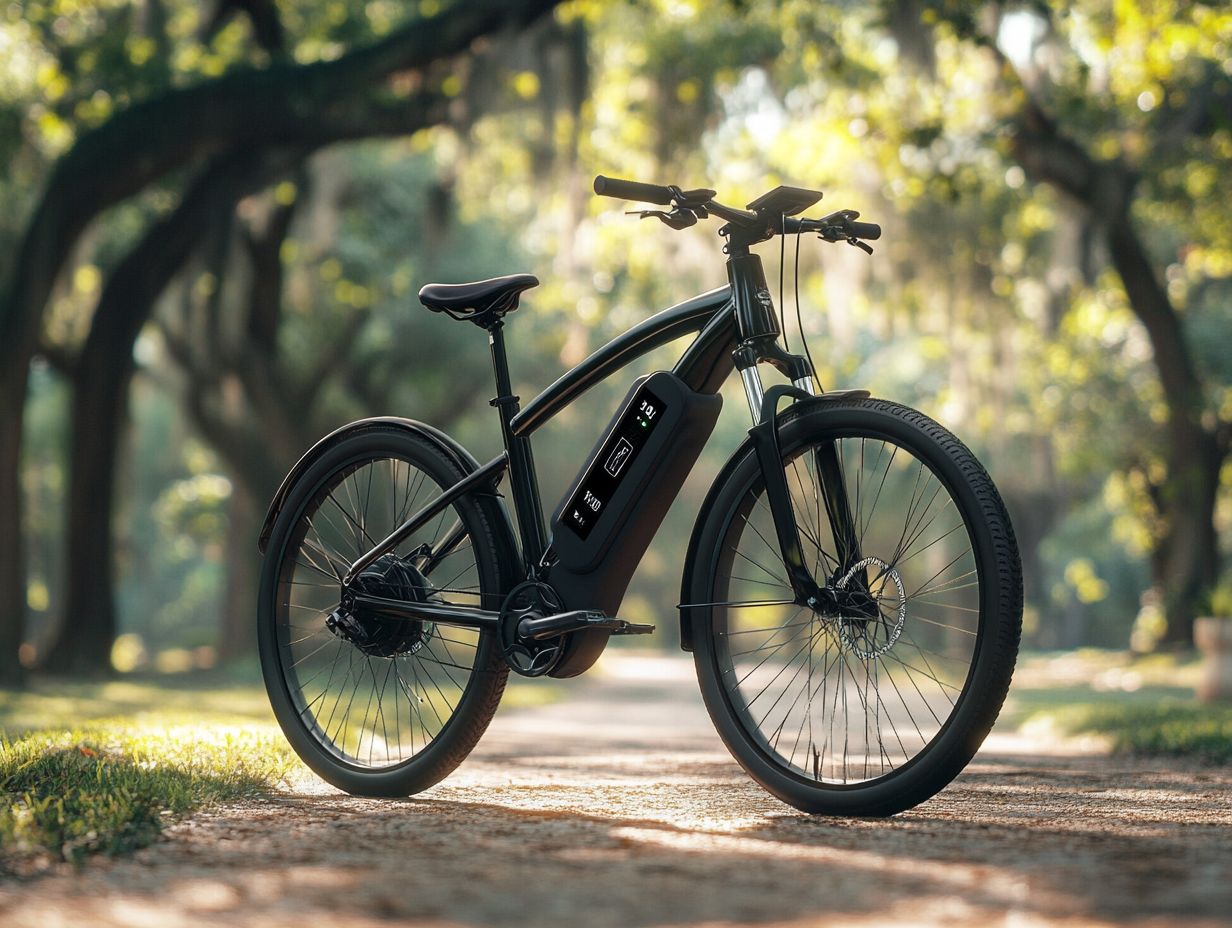
E-bikes usually last between 3 to 10 years. This lifespan depends on factors like battery quality, motor efficiency, and frame integrity.
Conduct routine inspections and timely maintenance. This can significantly boost your bike’s longevity and let you enjoy cycling for years.
Statistics reveal that the average e-bike battery endures around 500 to 1,000 charge cycles, equating to about 2 to 5 years of regular use. Users emphasize that keeping their e-bikes clean and protected from the elements boosts performance and instills pride in ownership.
Simple maintenance practices, such as checking tire pressure and lubricating the chain, lead to a smoother ride. Prioritizing these habits not only prolongs your e-bike adventures but also seamlessly integrates fitness into your daily routine.
How to Extend the Lifespan of Your E-Bike
To extend your e-bike’s lifespan, embrace effective maintenance practices and follow proper charging techniques.
Regularly inspect vital components like the chain and brake system. This ensures optimal performance and enhances the durability of your electric bike.
Taking these steps can save you money in the long run, making your investment worthwhile.
Maintenance and Care Tips
For your e-bike to perform at its best, effective maintenance and care tips are essential. Regular chain maintenance and careful charging of lithium-ion batteries significantly enhance battery life.
Routine chain checks, including lubrication, reduce wear and tear. It’s also crucial to inspect the brakes for responsiveness your safety depends on it!
Charging the battery after each ride and avoiding complete discharges maintains its health. Conducting inspections once a month helps catch potential issues early.
By adopting these practices, you’ll enjoy a smoother and more gratifying ride. Get ready to focus on the thrill of exploration and adventure!
Common Repairs and When to Replace Parts
Understanding common repairs and when to replace parts is essential for keeping your e-bike in top shape. Key components like the motor, battery, and frame will require your attention over time.
For example, if you hear unusual noises from the motor or notice the battery struggling to hold a charge, take a closer look. Common issues like flat tires and worn brake pads can compromise safety and lead to severe damage if neglected.
Choosing quality components is crucial. Cheaper parts may save money initially but can lead to higher repair costs later. Follow maintenance guidelines to preserve your e-bike’s functionality and enhance your overall riding experience.
Comparing E-Bike Life Span to Traditional Bikes
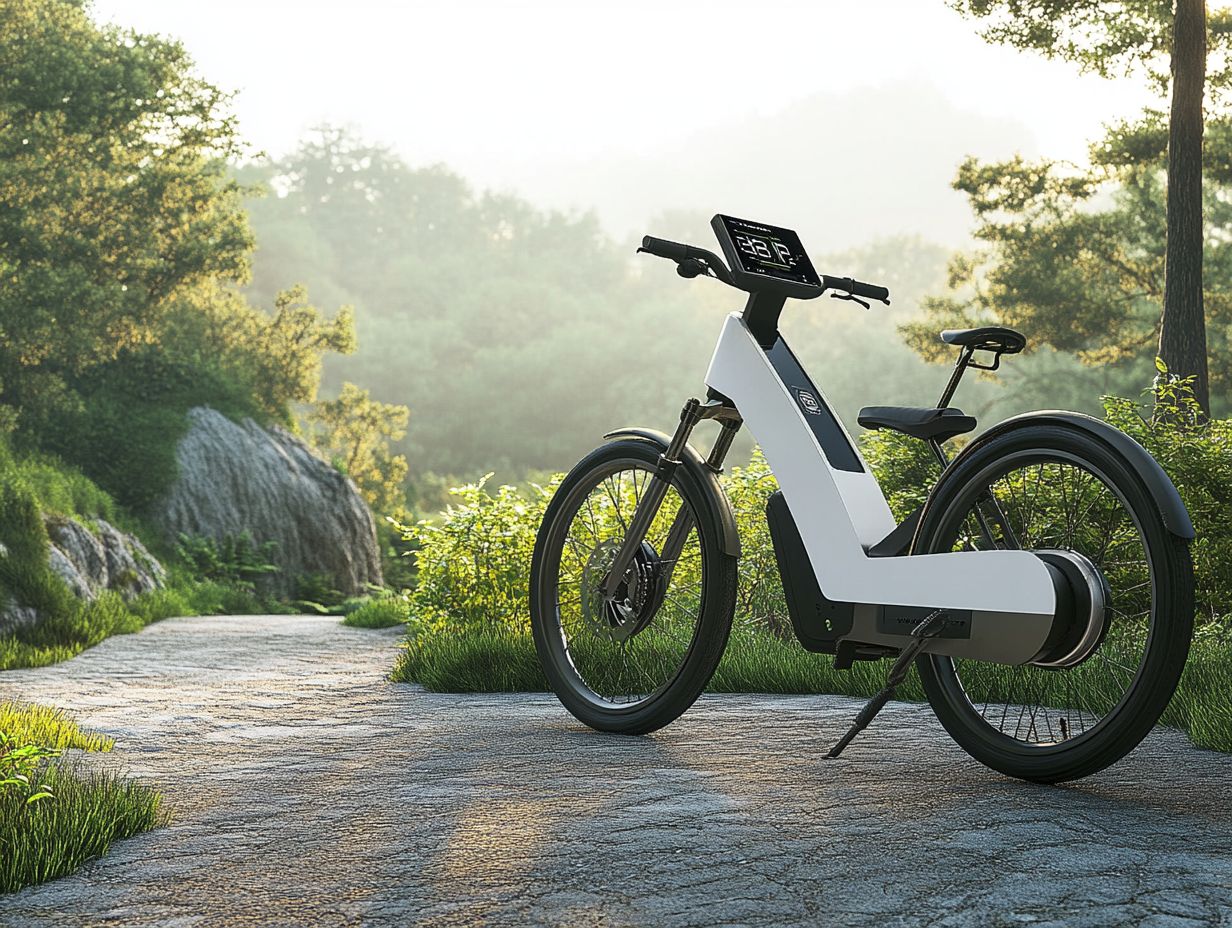
When you compare e-bikes to traditional bikes, several factors come into play regarding life span, durability, and maintenance needs.
Traditional bikes might require less technological upkeep, but e-bikes demand special care for their electric components. This distinction underscores the advantages of e-bikes as a cost-effective solution, especially when you factor in their health benefits and the convenience they offer for transportation.
Differences in Durability and Maintenance
The differences in durability and maintenance between e-bikes and traditional bikes arise primarily from their distinct components and design. E-bikes involve the added complexity of electric motors and battery systems, making regular maintenance practices crucial for ensuring motor longevity and frame quality.
As an e-bike owner, you’ll notice that maintenance needs differ significantly. The lithium-ion batteries often found in e-bikes require your careful attention to maintain optimal performance, and you might wonder about their longevity. Understanding what the lifespan of an e-bike battery is can help you manage this aspect, while traditional bikes lean more towards mechanical upkeep.
You should regularly check battery charge cycles and connections to avoid larger issues later on. Taking these steps will help you enjoy a reliable riding experience while minimizing potential repair costs.
Factors to Consider when Purchasing an E-Bike
When you re in the market for an e-bike, several critical factors come into play, including the quality of components, battery life, motor type, and warranty options. These elements impact not just your immediate experience but also serve as a savvy investment for long-term use and maintenance.
A well-constructed frame and reliable brakes are essential for enhancing safety and performance, ensuring you enjoy a smoother ride. Battery life is crucial as it dictates both your distance and convenience, while the motor type can significantly influence efficiency and handling.
Researching various brands is vital; reputable companies often provide superior quality and support, which can elevate your e-bike’s resale value over time. Understanding warranty conditions is equally important; a comprehensive warranty can offer confidence and protect you against unexpected repairs, ultimately enhancing your satisfaction with the purchase.
By considering these factors, you can make informed decisions that perfectly align with your riding needs and lifestyle.
Frequently Asked Questions
What Is the Average Life Span of an E-Bike?
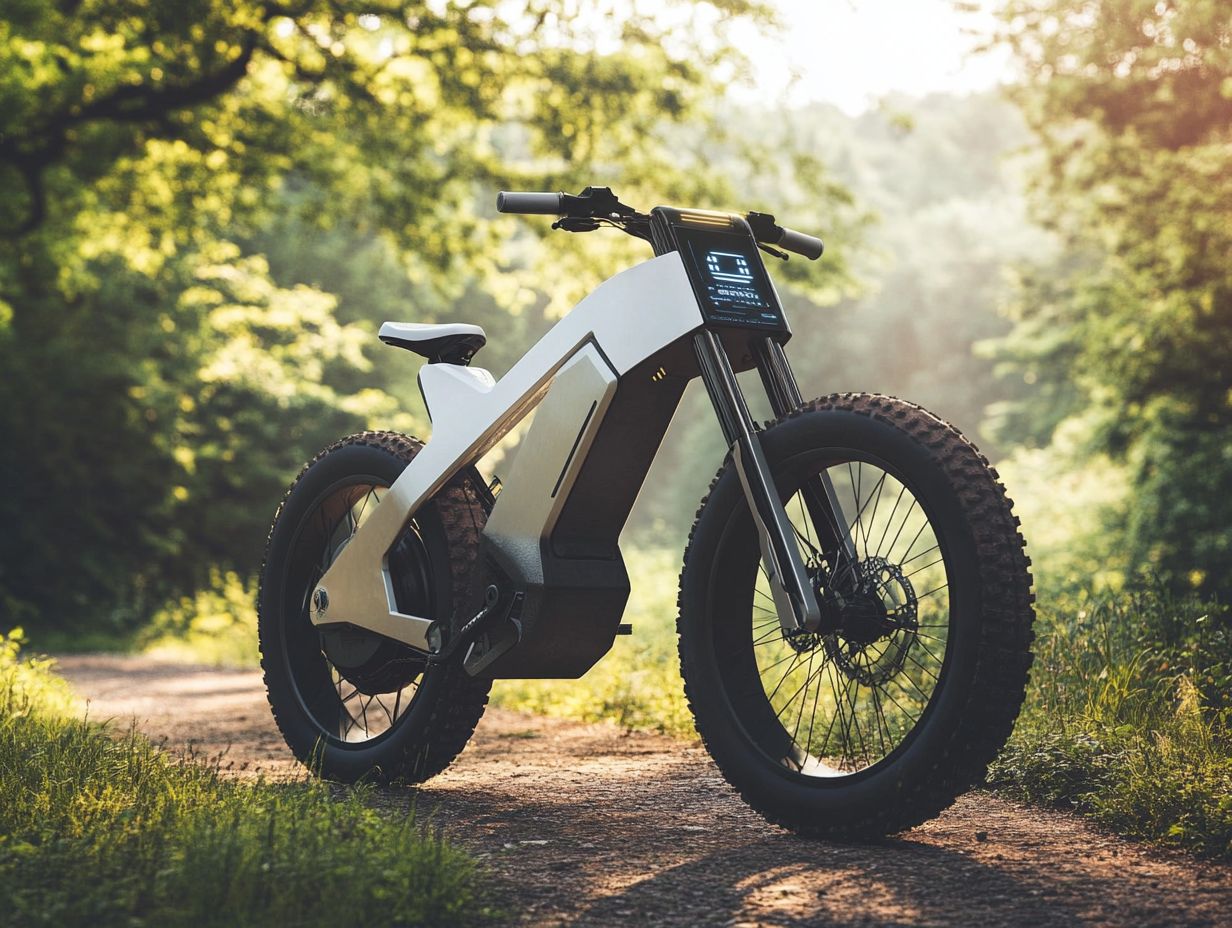
The average life span of an e-bike is around 3-5 years, depending on usage and maintenance.
How can I prolong the life span of my E-Bike?
To prolong the life span of your e-bike, proper maintenance and regular tune-ups are essential. Keeping the battery charged and storing the bike in a dry and cool place can also help extend its life span.
Do E-Bikes have a shorter life span compared to traditional bikes?
Not necessarily. While the average life span of an e-bike may be shorter, it also depends on the quality of the bike and how well it is maintained.
What factors can affect the life span of an E-Bike?
Factors such as frequency of use, terrain, rider weight, and component quality can all impact the life span of an e-bike.
Is it worth investing in a high-quality E-Bike to extend its life span?
Yes, investing in a high-quality e-bike can potentially extend its life span and save you money in the long run by reducing the need for repairs and replacements.
Ready to choose your e-bike? Start your journey today!
What should I do if my E-Bike is nearing the end of its life?
If your E-Bike is nearing the end of its life, it might be time for a change.
Proper disposal of your old bike and getting a new one can boost your safety and improve your riding experience. Don’t wait until it’s too late! Upgrade your ride today for a safer and more enjoyable experience.


